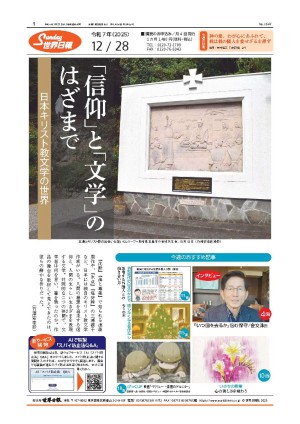強い信仰が薬物使用を抑制 Strong religious beliefs linked to lower rates of drug abuse
ワインが重要な役割を果たすキリスト教だが、薬物使用の抑制には非常に効果的であることが研究から明らかになった。
DrugAbuse.comが「薬物と信仰:信徒と非信徒の間の薬物乱用比較」で行った分析によると、信仰と麻薬使用の拒否との間に相関関係があるという。
信仰は待たないという米国人は、さまざまな違法薬物を使用する可能性が高くなる。マリフアナ、アルコール、エクスタシー、ヘロインまでさまざまだ。過去1年間の調査では、非信徒は信徒に比べて12倍、LSDを使用しやすくなり、コカインでは4倍以上となっている。
さらに、信徒の割合が少ない州では、薬物使用の割合も高くなっている。宗教色が最も薄く、住民のわずか32%が宗教が人生の中で「非常に重要」と答えたバーモント州では、不法薬物使用率は3番目に高かった。一方、77%の住民が宗教は人生の中で非常に重要と答えた、最も宗教的なアラバマ州では、不法薬物使用率は6番目に低かった。
大学間キリスト教徒フェローシップのキャンパスエンゲージメント部長兼副会長のグレッグ・ジャオ氏は、真理と永遠性を重視するなどのキリスト教的な要因が、薬物使用につながる可能性のある虚無的な傾向を抑制していると指摘した。
「キリスト教徒としてのイエスへの信仰のおかげで、人生や世界の現実にきちんと向き合うことができている。信仰によって世界観、時間感覚が変わったと思う。キリスト教徒として永遠性について考えることは重要なことだ。そのため、1年とか10年ならよくなくても、全体から見れば悪くはないと考える」
「キリスト教は、日常的な日々の生活の中で神を実感することを強く求めるものだと思う。そのため、不自然に気持ちのよさを求める欲求が低くなる。いつも満ち足りているとは限らないが、日常的な喜びを実感しているからだ」
研究結果は、キリスト教神学が薬物使用の抑制に効果があるという主張を裏付けるものだ。マリフアナを使用しない「非常に重要な」理由を聞くと、宗教的な8学年と10学年の67%が、信仰に反するからと答えた。一方、非信徒では、マリフアナを使用しない理由が明確でなく、非宗教的な中高生のわずか27%が、自身の信念に反するからと答えている。
米コミュニティー反薬物連合の議長兼会長のアーサー・ディーン少将は、薬物使用の根絶でコミュニティーが果たす役割の重要性を強調した。
「宗教的なイベントに参加することが、保護要因となると考えている。つまり、宗教コミュニティーへ何らかのかたちで関与していれば、若い人々が手を染めている薬物などのよくない活動に関わる可能性は低くなるということだ」
「宗教であれ、スポーツなどの活動であれ組織的活動に関与することはすべて、保護要因として働くことを発見した。組織的活動に関与する人々を調査すれば、宗教に関して見いだしたのと同じ結果が見つかるはずだ」
研究からはさらに、社会的規範が、信仰を持つ人々の間で薬物使用率が低いことを最もよく説明していることが裏付けられる。宗教的な中高生の59%が、友人はマリフアナを使用していないと答えた。非宗教的な中高生では39%だ。宗教的な中高生の62%が、ボーイフレンドとガールフレンドは薬物の使用を認めないだろうと答えたが、非宗教的な中高生では42%だった。また、宗教的な中高生の81%が、両親は薬物の使用を認めないだろうと答えたが、非宗教的な中高生では62%だった。
(3月27日付)
For a religion in which wine plays such a central role, Christianity may prove surprisingly effective at curbing drug use, according to a study.
Data analyzed by DrugAbuse.com in “Drugs and Devotion: Comparing Substance Abuse by Believers and Nonbelievers” show a correlation between religious belief and a reluctance to experiment with narcotics.
Americans who said they are not religious are more likely to have used a host of illicit drugs, ranging from marijuana and alcohol to Ecstasy and heroin. Nonbelievers in the study, for instance, were 12 times more likely to use LSD and more than four times likely than their religious counterparts to try cocaine in the past year.
Additionally, states with the lowest rates of religious belief had some of the highest rates of drug use. The least-religious state, Vermont, where only 32 percent of residents said religion is “very important” in their lives, had the third-highest rate of illicit drug use. The most religious state, Alabama, where 77 percent said faith plays a significant role in their lives, had the sixth-lowest rate of illicit drug use.
Greg Jao, director of campus engagement and vice president of InterVarsity Christian Fellowship, said several components of Christianity, such as its emphasis on truth and comprehensive view of eternity, discourage nihilistic tendencies that may open the door to drug use.
“For me as a Christian, part of what my faith in Jesus does is it calls me to face reality ruthlessly in my own life and in the world around me,” Mr. Jao said. “I think it changes my perspective and timeline. I’m challenged as a Christian to think in terms of eternity - so, yes, this year or decade may be bad, but it’s not the whole of my existence.
“And I think Christianity challenges you to actually experience God in the quotidian, day-to-day experience of life,” he said. “So my need for an altered, super high is quite low because, in fact, while I may not always be happy, there’s a deep experience of regular joy.”
The study supports the notion that Christian theology discourages drug use. When asked for “very important” reasons not to use marijuana, 67 percent of religious eighth- and 10th-graders said it is against their faith. Nonbelievers in the study had little reason not to use marijuana. Only 27 percent of nonreligious high school students said it would violate their beliefs.
But Gen. Arthur Dean, chairman and CEO of Community Anti-Drug Coalitions of America, emphasized the role that community plays in snuffing out drug use.
“Being involved in a religious service is what we would call a protective factor, which means that you are less apt to get involved in drugs or other negative activities that young people are involved in, if you are involved in some kind of a faith community,” Mr. Dean said.
“What we find is that involvement in structured activities, whether they be religious or whether they be sports or other kinds of activities, all serve as protective factors,” he said. “I believe if you did research on them, you would find similar results that you found on religion.”
The study also supports the hypothesis that communal norms best explain lower rates of drug use among the religious. Fifty-nine percent of religious high school students said their friends don’t use marijuana, compared with 39 percent of nonreligious students; 62 percent of religious students said their boyfriend or girlfriend would disapprove of drug use, compared with 42 percent of nonreligious students; and 81 percent of religious high school students said their parents would disapprove of marijuana, compared with 62 percent of nonreligious students.
March 27, 2016





